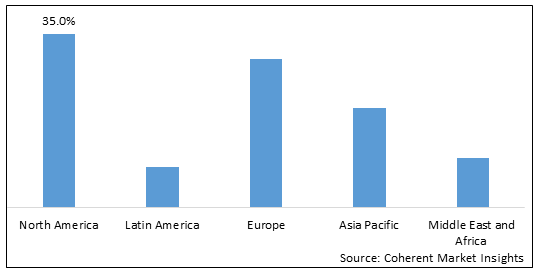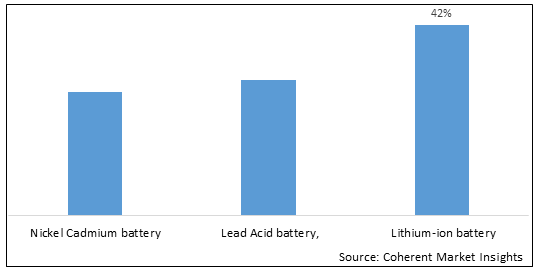Aircraft batteries are used to start the engines of aircraft similar to car batteries. An electrical failure is a very serious issue and often is an emergency that requires that the aircraft batteries take up power load to run the essential functions until the power generation is restored or the aircrafts lands and the passengers and crew are evacuated. If there is an engine shutdown during the flight due to slow down of engine or any other reason, the batteries are required to restart the engines.
The aircraft batteries are also very important to regulate the DC voltage on the aircraft. This ensures that the quality of power received by the electronic and electrical equipment is of good quality. Therefore the batteries have to be of high quality and they should be maintained and kept in perfect working condition at all times.
The batteries must be regularly checked to ensure safety and improve reliability. Regular maintenance ensures peak performance and reduces the chances of onboard failures that cause aircraft delays, which are very costly to the aircraft operators, in terms of maintenance. Battery maintenance is performed off aircraft in dedicated maintenance facilities such as e2b calibration. Basic maintenance procedures are similar for both Lead-Acid and Ni-Cd batteries. Apart from the usual tools such as torque wrenches and multi-meters is required to perform the charging and discharging sequences of the batteries. The electrolyte levels of the vented batteries are also required to be checked and charged up regularly.
Restraint:
Testing batteries is difficult and important. Aircraft battery manufacturers face a number of difficulties including setup and system complexity, lengthy testing periods, adherence to evolving safety regulations. Moreover due to complicated systems and dangerous materials used in batteries, battery testing has turned into a difficult and drawn-out process. Batteries can explode due to their high currents, toxic compounds, and high voltages. For instance, the majority of battery manufacturers do life cycle tests, which can take up to six months or longer. It takes a lot of time because separate tests are needed for each application.
Aircraft Battery Charging and Testing Market Report Coverage
| Report Coverage | Details | ||
|---|---|---|---|
| Base Year: | 2021 | Market Size in 2021: | US$ 652.57 Mn |
| Historical Data for: | 2017 to 2020 | Forecast Period: | 2022 to 2030 |
| Forecast Period 2022 to 2030 CAGR: | 7.7% | 2030 Value Projection: | US$ 1120.40 Mn |
| Geographies covered: |
|
||
| Segments covered: |
|
||
| Companies covered: |
ATEQ AVIATION, Blue Skies Aviation, DUNCAN AVIATION INC., Saft, ARBIN INSTRUMENTS, Concorde Battery Corporation, Enersys, The Boeing Company, GS Yuasa Corporation, Securaplane Technologies, Inc. |
||
| Growth Drivers: |
|
||
| Restraints & Challenges: |
|
||
Uncover macros and micros vetted on 75+ parameters: Get instant access to report
Global Aircraft Battery Charging and Testing Market - Impact of Coronavirus (Covid-19) Pandemic:
The COVID-19 pandemic had a negative impact on the aviation business, and those effects are estimated to last throughout the forecast period. Passenger traffic in the commercial sector fell significantly between 2020 and 2021. It is estimated that it will take two to three years to fully recover due to the emergence of many pandemic waves in numerous countries. The COVID-19 epidemic and containment measures have dramatically reduced demand for passenger air travel (and freight, to a lesser extent), endangering the future of the industry. The battery manufacturers were heavily affected as demand reduced at the beginning of the pandemic during Q1 2020. The sales decline in various sectors such as consumer electronics, electric vehicles, aircraft, manufacturing and others. Thus, the battery manufacturers had to reduce battery production to avoid oversaturation in the market.
Moreover, declining lithium-ion battery prices and increase in demand of electric vehicles, tend to increase the battery production, which would directly affect the aircraft battery charging and testing market.
North America held dominant position in the global aircraft battery charging and testing market in 2021
Statistics:
North America held dominant position in the global aircraft battery charging and testing market in 2021, accounting for 35% share, in terms of value, followed by Europe and Asia Pacific.
Figure 1: Global Aircraft Battery Charging and Testing Market Share (%), By Region, 2021

To learn more about this report, Request sample copy
North America is expected to dominate the aircraft battery charging and testing market. This is due to the increasing demand of aircraft batteries owing to the large demand of fleets. There is also growth in the manufacturing of aircraft in this region.
The growing usage of unmanned aerial vehicle (UAVs) for military tasks and responsibilities, such as object inspection, is driving the growth of the European market. Asia Pacific is anticipated to have the highest CAGR throughout the projection period due to its expanding development rate. The need to conserve land in nations like China and India, as well as the rising demand for new aircraft for both general aviation and commercial use, are driving the regional market to expand.
Lithium-ion battery segment is expected to drive the market growth during the forecast period
The market is segmented into lead-acid batteries, lithium-ion batteries, and nickel-cadmium batteries based on battery type. The nickel-cadmium battery segment is expected to retain its dominance up to 2030, while lithium-ion battery segment is expected to grow at fastest rate. With the assistance of important stakeholders, the aircraft industry is gradually switching from lead-acid batteries to nickel-cadmium and lithium-ion batteries as programs for new-generation aircraft are relying more on lithium-ion batteries.
Figure 2: Global Aircraft Battery Charging and Testing Market Share (%), By Battery Type, 2021

To learn more about this report, Request sample copy
The global aircraft battery charging and testing market is estimated to be valued at US$ 652.57 Mn in 2022 and is expected to reach US$ 1120.40 Mn by 2030 at a CAGR of 7.7% between 2022 and 2030.
Major players operating in the global aircraft battery charging and testing market include ATEQ AVIATION, Blue Skies Aviation, DUNCAN AVIATION INC., Saft, ARBIN INSTRUMENTS, Concorde Battery Corporation, Enersys, The Boeing Company, GS Yuasa Corporation, Securaplane Technologies, Inc.
Share
Share
Missing comfort of reading report in your local language? Find your preferred language :
Transform your Strategy with Exclusive Trending Reports :
Frequently Asked Questions
Select a License Type
Credibility and Certifications

860519526

9001:2015
27001:2022


Joining thousands of companies around the world committed to making the Excellent Business Solutions.
View All Our Clients
US Reciprocal Tax Impact Analysis On Aircraft Battery Charging And Testing Market
Stay updated on tariff changes with expert insights and timely information